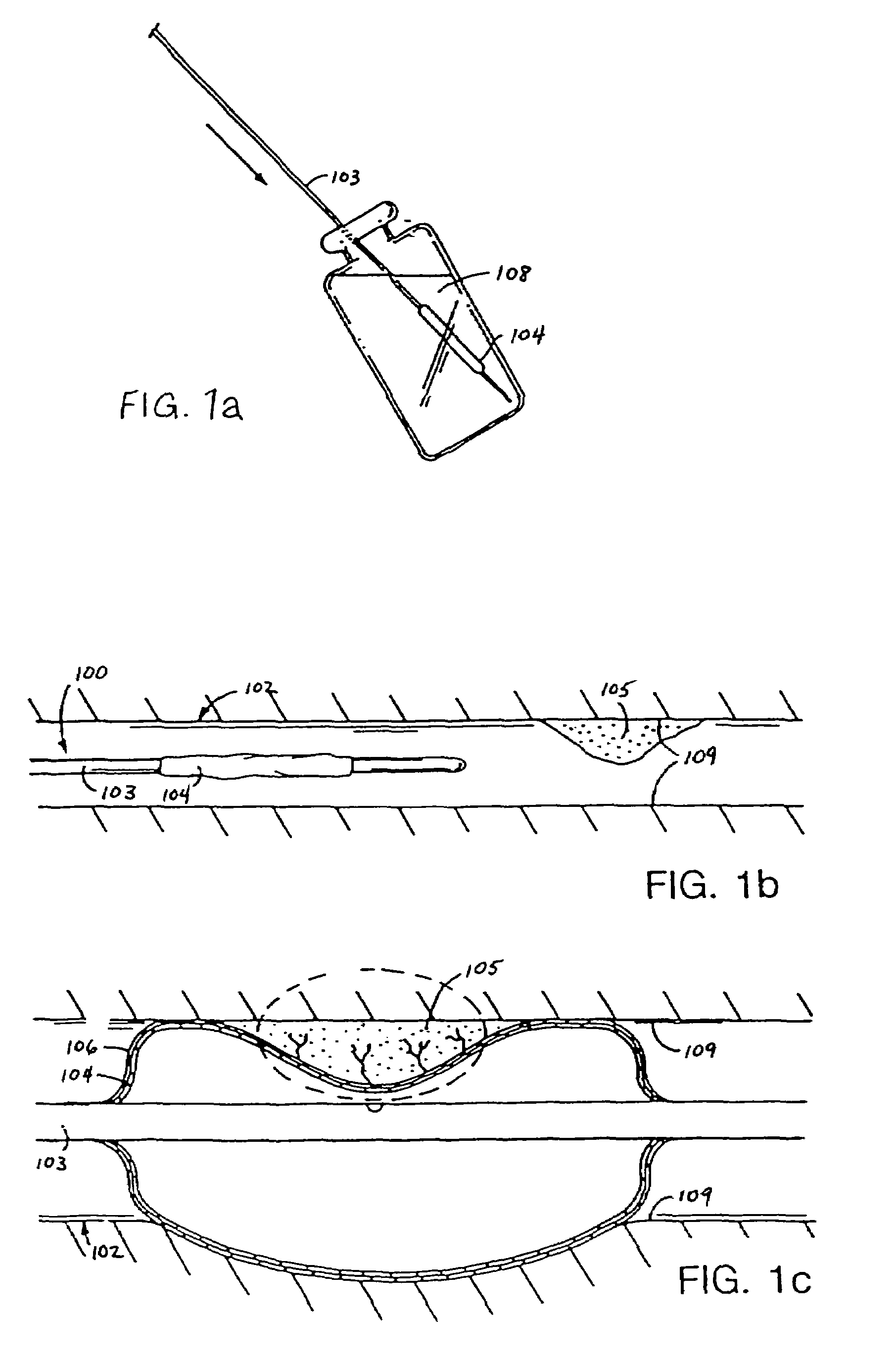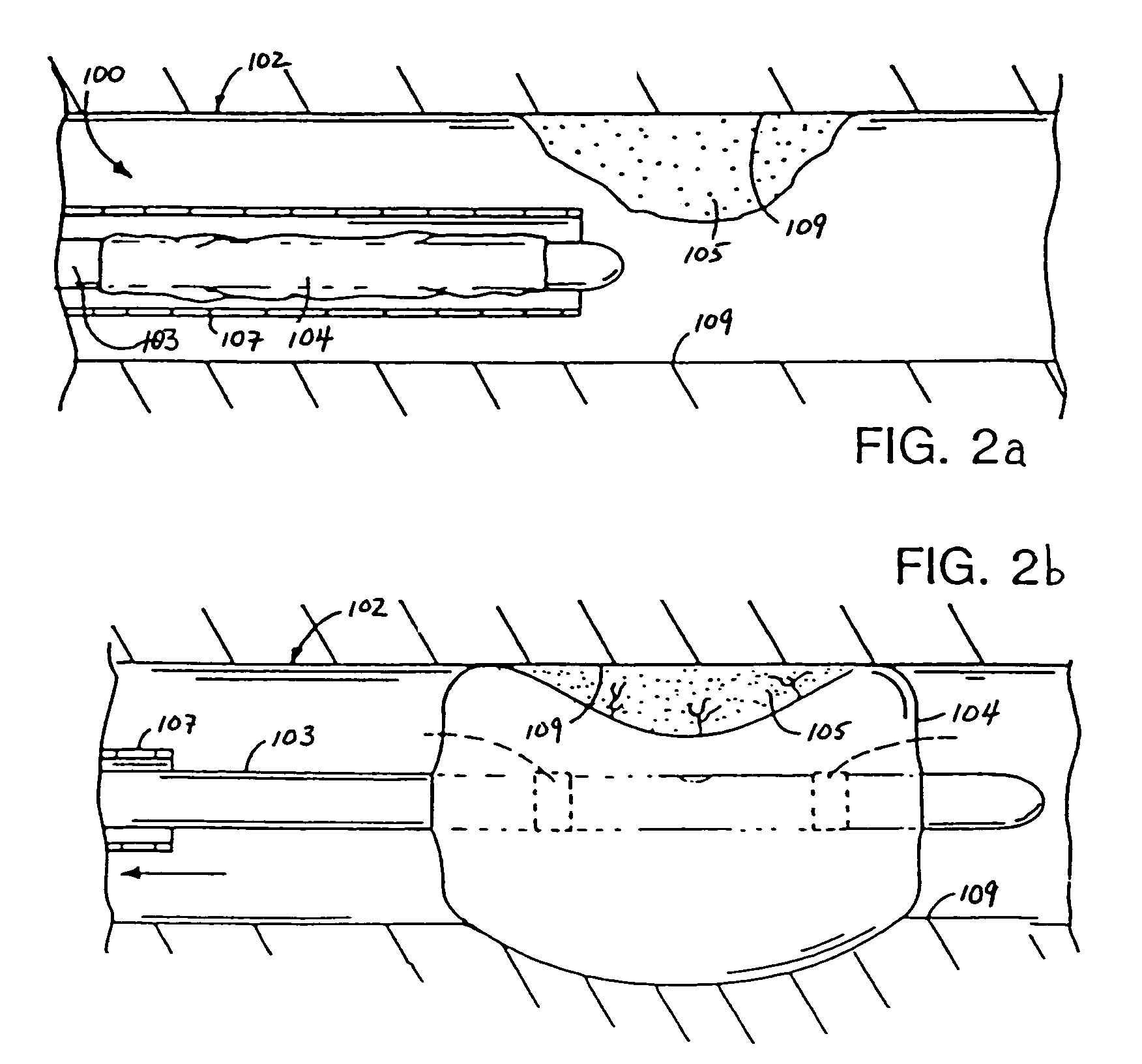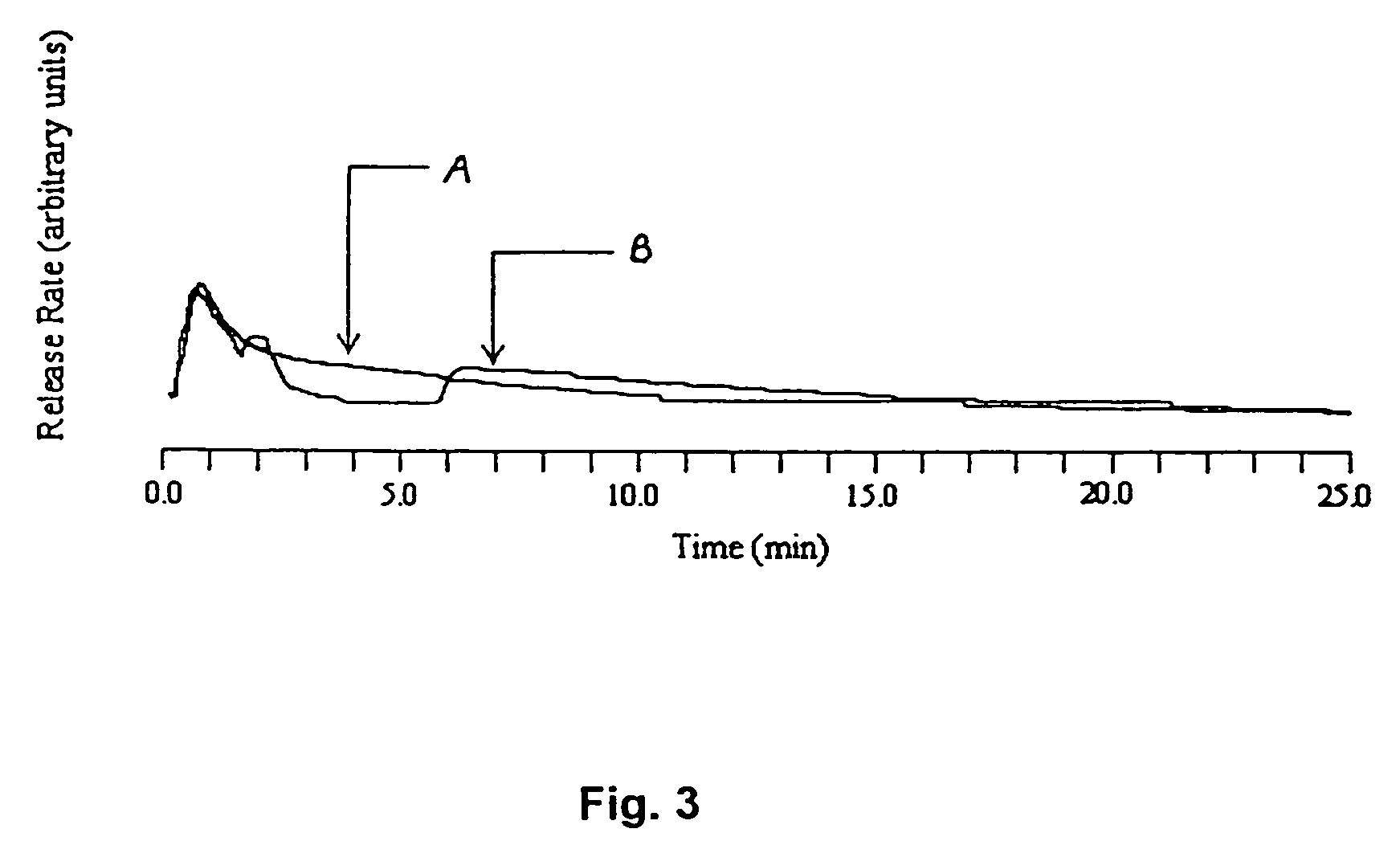Temperature controlled solute delivery system
- Summary
- Abstract
- Description
- Claims
- Application Information
AI Technical Summary
Benefits of technology
Problems solved by technology
Method used
Image
Examples
example 1
Release of Solute from Bonded PNIPA Gels
[0041]PNIPA gel was synthesized by the free radical solution copolymerization / crosslinking of PNIPA monomer. Approximately 9.6 g of NIPA monomer per 0.4 g of the crosslinker N,N′-methylenebisacrylamide was dissolved in 100 mL distilled water. Reagent grade ammonium persulfate (“APS”) was used to initiate the reaction and reagent grade N,N,N′,N′-tetramethylethylenediamine (“TEMED”) was added as an accelerator. Freshly prepared initiator solutions were added to the solution to result in concentrations of 0.30 mg of APS per mL of monomer solution, and 0.15 mg of TEMED per mL of monomer solution. All solutions were degassed under 24 in Hg of vacuum for approximately 15 minutes.
[0042]The gels were synthesized in a glove box under a nitrogen atmosphere containing less than 2% oxygen. The initiators were added to the monomer solution and the solution was degassed under vacuum while stirring on a magnetic stirrer for 10-15 minutes.
[0043]Bonded gel mem...
example 2
Release of Solute from Bonded HPC Gels
[0057]HPC gel was synthesized by chemically crosslinking hydroxypropyl cellulose. Specifically, about 1 gram of HPC polymer (Sigma Chemical Co., 100,000 Da) was dispersed in about 10 mL of aqueous sodium hydroxide solution (pH 12) while stirring the solution until all polymer was thoroughly wetted. The solution was covered with PARAFILM® and 24 hours was allowed for complete polymer hydration. Divinylsulfone (“DVS”) was added by micropipette and the solution stirred with a spatula. After mixing in the DVS, the solution was transferred to polypropylene centrifuge tubes and centrifuged at about 11,800×g for 1 hour to remove any air bubbles entrapped in the solution. The solutions were removed from the centrifuge tubes about 24 hours after the addition of divinylsulfone and placed in distilled water acidified by addition of hydrochloric acid to neutralize excess sodium hydroxide. The water was changed at 24 hour intervals for four to five days unti...
example 3
Release of Water-soluble Estradiol Complex
[0069]HPC gel membrane samples having a thickness of approximately 0.66 mm were made as described in Example 2. These samples were impregnated with water-soluble estradiol complex (M.W. 980 Da) as solute. FIG. 9 shows a comparison of isothermal and temperature step change releases. In the figure, curve A represents the release profile for isothermal test conditions at 24° C., and curve B represents the release profile for temperature step change conditions where the temperature was increased from 24° C. to 54° C. after two minutes into the test. Curve B illustrates a large solute release convective pulse upon the temperature trigger at two minutes, thus resulting in a large amount of estradiol being released in a relatively short period of time. For the sample that underwent the temperature step change, about 77% of the estradiol was released within the first 7 minutes of the test: 18% before the temperature change and 59% in the five minute...
PUM
| Property | Measurement | Unit |
|---|---|---|
| Temperature | aaaaa | aaaaa |
Abstract
Description
Claims
Application Information
 Login to View More
Login to View More - R&D
- Intellectual Property
- Life Sciences
- Materials
- Tech Scout
- Unparalleled Data Quality
- Higher Quality Content
- 60% Fewer Hallucinations
Browse by: Latest US Patents, China's latest patents, Technical Efficacy Thesaurus, Application Domain, Technology Topic, Popular Technical Reports.
© 2025 PatSnap. All rights reserved.Legal|Privacy policy|Modern Slavery Act Transparency Statement|Sitemap|About US| Contact US: help@patsnap.com



